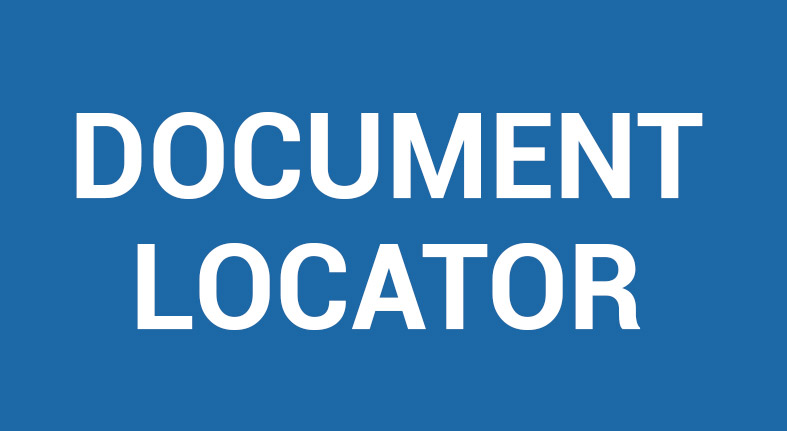Document Locator helps BMA improve collaboration, manage project files
Brais, Malouin and Associates, Inc., located near the heart of Quebec on the island of Montreal, is an energy engineering consulting firm specializing in combustion and energy utilization design and modeling. BMA helps its clients—who are in energy-intensive industries such as mining, pulp and paper, metallurgy, and petrochemical—solve their combustion problems and improve energy efficiencies. BMA is highly specialized, but what sets them apart is their experience and the unique tools they have at their disposal that enable them to create solutions for their clients that other firms cannot.
Sharing information effectively—the number one challenge
BMA’s projects are team-based, so team members need to share information to collaborate effectively on projects. Also, the nature of the business means that sometimes new team members are brought in midway through a project, or team members are changed. Having all project-related information in one location is especially important so new people can access it to learn about projects and get integrated faster. The system BMA was using—folders on a shared file server—was proving to be inadequate.
First, information in the shared project folders wasn’t always complete. Project email and electronic fax correspondence didn’t always get added to project folders because doing so was a hassle: project managers had to convert it to PDF first to get it out of Microsoft Outlook in a readable format. Some project managers found this too time-consuming, so it was not done consistently. Says Director of Operations Guy de Carufel, who is responsible for assigning people and resources to projects, “If we got an email from a customer or if we sent a technical memo via email, those were not shared with everybody, they were just kept in people’s In boxes.”
He points out that this is a real problem because email is a major method of exchanging project information, and the email record is critical for people getting briefed on projects.
Second, there was no real file versioning. “In some cases,” says de Carufel, “we ended up with hundreds of files with the same name with just a version number to differentiate them—which is not good.” Not good because it added to another problem: finding files in a timely manner. While they could often rely on file dates to distinguish versions, they couldn’t tell what was in each version without opening and reviewing it, and there were too many files to sort through.
Incomplete information and difficulty searching for files led to a fourth problem: project managers had to take more time to brief new team members, and the new people had to wait until the project managers had time to do so—which wasn’t always immediately.
De Carufel decided they needed a better system. They needed a centralized, searchable repository where they could store all project-related information and find it quickly, with version control, and the ability to easily store faxes and email there as well.
Finding a solution
Many of the systems de Carufel looked at were too expensive or too hard to learn to use, or didn’t have enough of the right features in one package. “I looked at low-end products and the high-end, big-name products in the industry. Document Locator was the right size, the right price, and had the right kinds of features we needed,” he says.
While they use Deltek Vision® for certain project management accounting needs, Document Locator is the primary application they use for document management. He estimates that 90% of Document Locator use is related to project management and the rest is for administrative purposes.
Usability a critical factor
One of the requirements de Carufel insisted on was usability. “I’ve always been a bit of a usability nut,” he says. “Putting a new system into any company is difficult because if you don’t get user acceptance, it doesn’t matter how ‘good’ the product is. It’s always a challenge to change the way people do things, so I needed something that was as close to seamless as possible.” Tight integration with the Microsoft environment meant that Document Locator came closer than any other system he considered.
Results: better communication, reduced project overhead
Document Locator has made sharing and finding project information easier and less time-consuming. Document Locator’s full-text indexing capability and its integration with Microsoft Outlook enables project managers to save faxes and emails directly to the repository from Outlook, and the contents are immediately searchable. And because the files are saved in their native format, no tracking information is lost, so there’s a reliable trail of project communications for teams to follow.
Also, they now have true version control with customized metadata to differentiate file versions. If they need to, they can easily go back to a previous version and promote it to be the current version, a feature that de Carufel says they use often.
Now that everything is centralized, team members can access a project’s full history for briefing purposes, usually without having to meet with the project manager first. This saves time for both new team members and the project managers. De Carufel estimates that for larger projects, this can easily shave about four hours off a project’s total overhead time.
Another benefit of Document Locator includes less reliance on Adobe Acrobat, and not just because they no longer need to PDF email. De Carufel says they use Document Locator’s PDF conversion tool when exchanging specifications and final reports with clients. In Document Locator, they can easily save a document as a PDF file when they check it in, and then right-click and email it straight from the repository. It’s more efficient that way than having to open Acrobat, convert the document and save it back to the repository. They haven’t needed to upgrade Acrobat since they implemented Document Locator.
Looking ahead, de Carufel says the next step in improving efficiency will be using the Folder Structure Template feature that will enable project managers to use templates to automatically create a series of predefined folders, complete with preconfigured settings.
Learn more
Be ready for the next audit
Employee files under control
Structured project files
Automate business processes
Ready for a Demo?
Take the first step towards streamlining your processes and enhancing collaboration with Document Locator. Request a demo today and discover how our document control solution can help your organization.
Fill out the form to get started.




